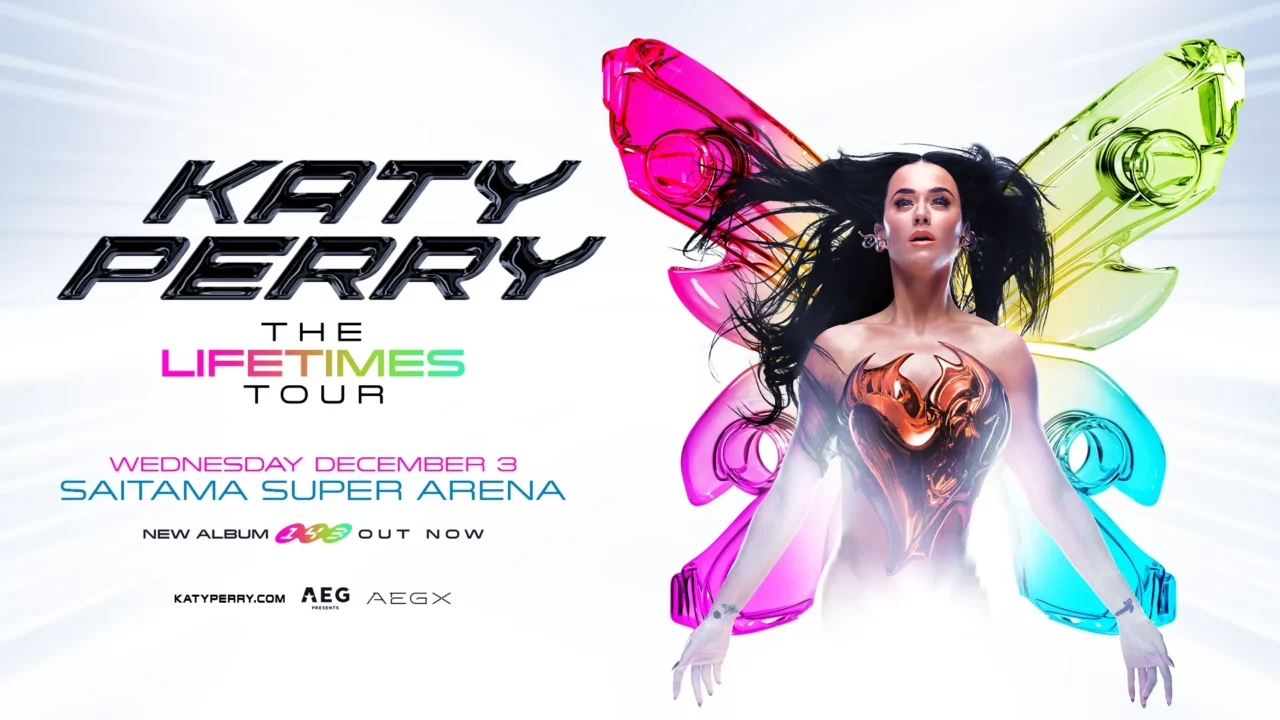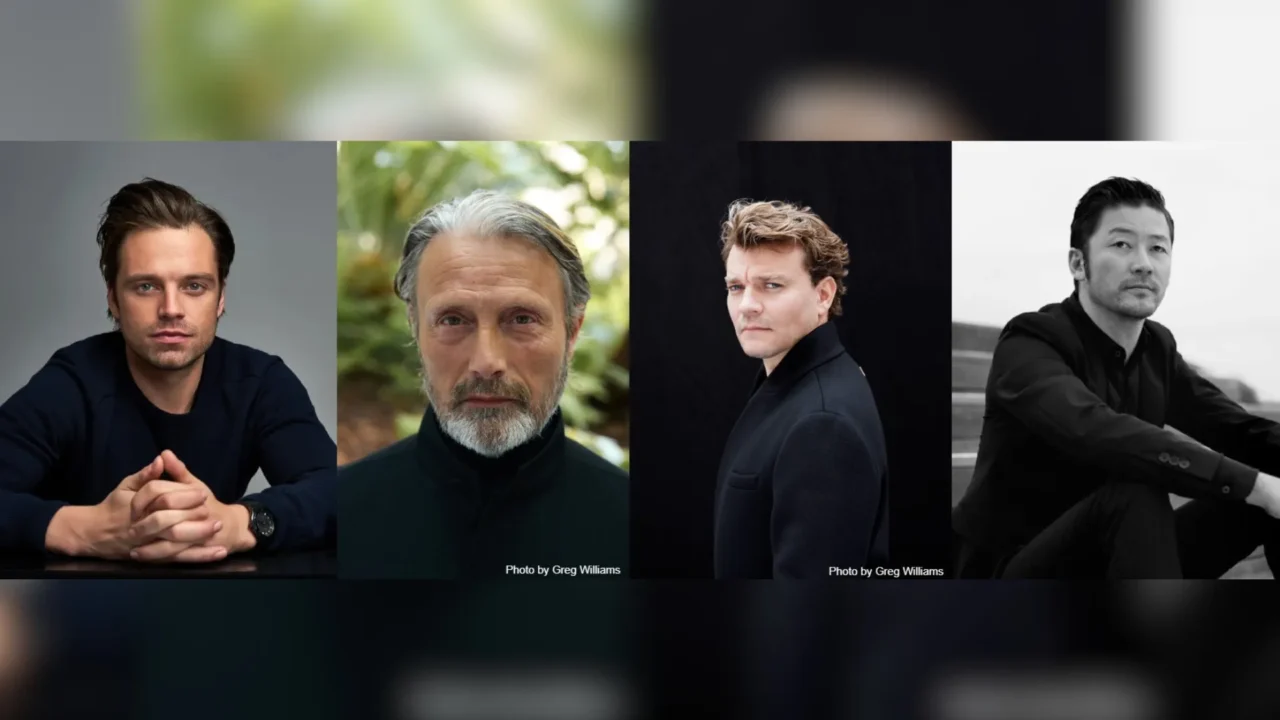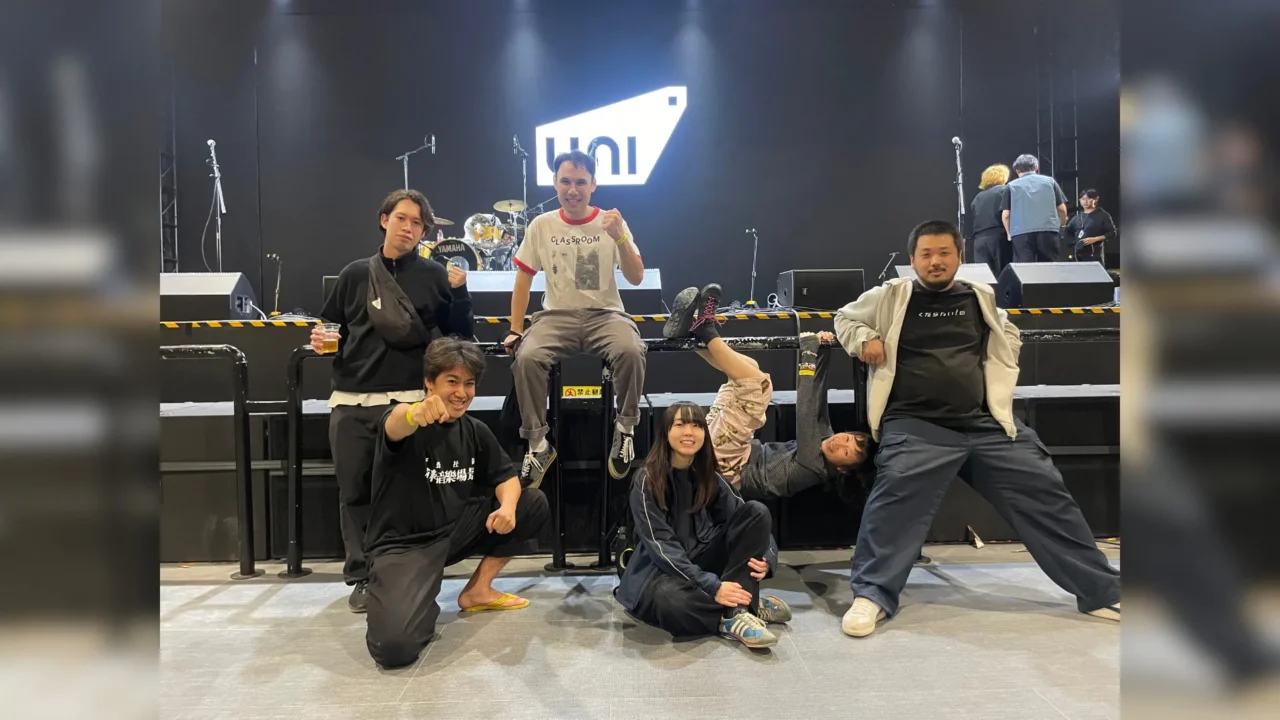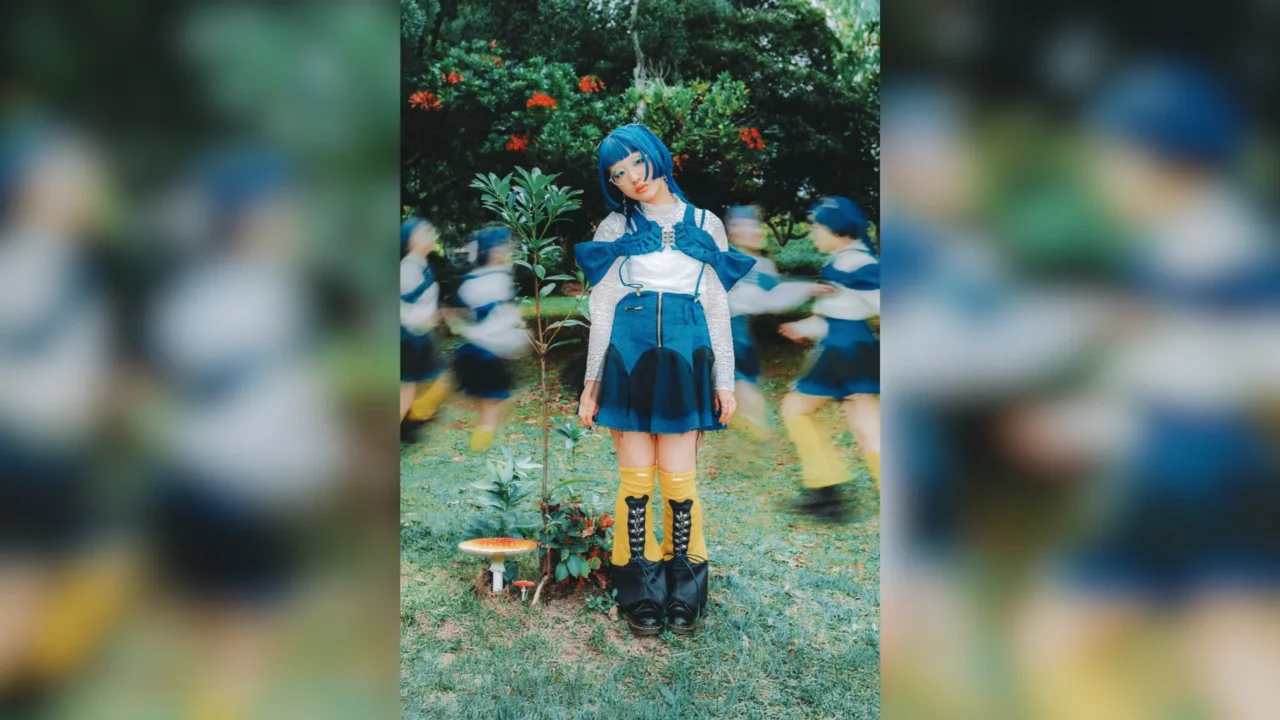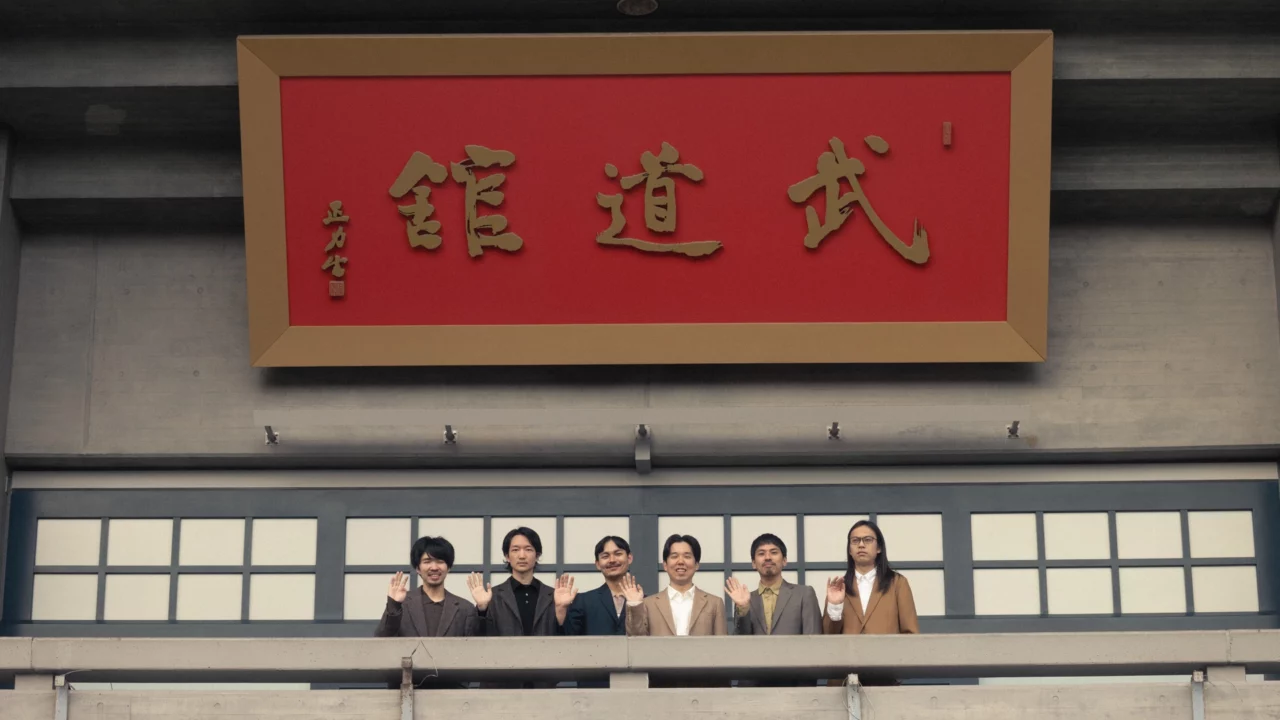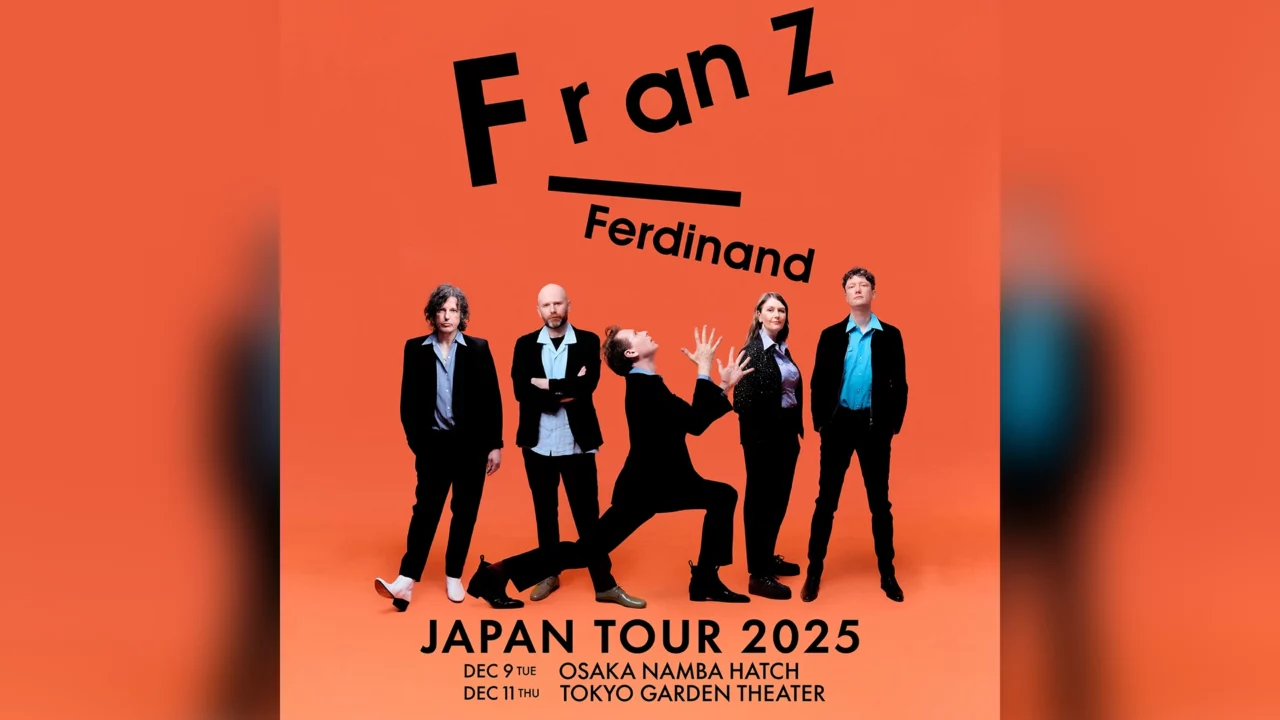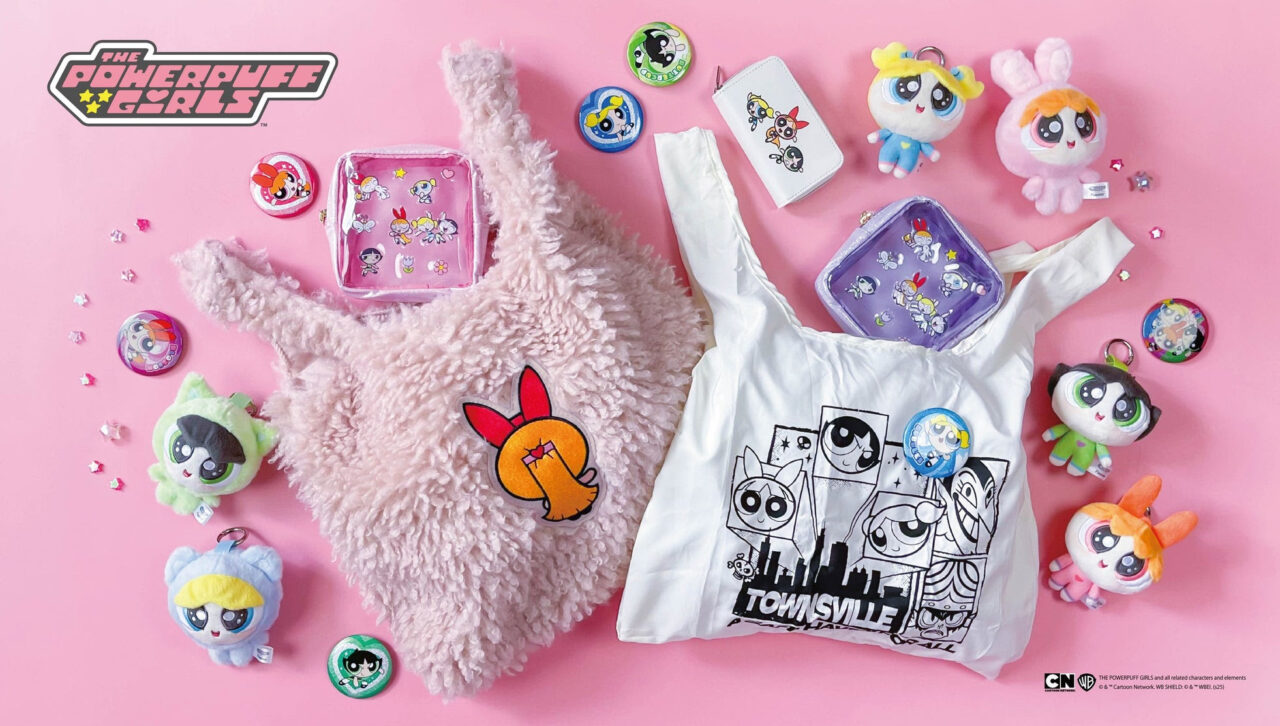Currently on display at the National Art Center in Roppongi is Paintings Are Pop Stars, a solo exhibition by contemporary artist Ei Arakawa-Nash. Marking a significant milestone, this exhibition is the first large-scale presentation of a performance artist since the center’s opening.
INDEX
This Art Is a Phenomenon
Performance art is an art form where the artist uses their body to create something in the moment, in a specific time and place. Unlike performances such as dance or theater, which are rehearsed and performed for an audience, performance art is more about the creation and sharing of a happening. It can be seen as an artistic prank that involves the audience.
Because of this, performance art is only truly completed between the artist and the audience witnessing “something” unfold, making it extremely difficult to record. Like the unforgettable night of witnessing a fantastic play, while you can record the narrative and the actors who performed it, the excitement, unity, and emotions that were felt in the moment cannot be transported or replicated.

Born in 1977 in Iwaki City, Fukushima Prefecture. A U.S.-born queer performance artist who has lived in New York since 1998 and in Los Angeles since 2019. Collaborating with various artists, Arakawa-Nash redefines the concept of “self” while expressing the uncertainty of art through group performances. He is currently a professor in the graduate art program at the Art Center College of Design in Los Angeles. Recent solo exhibitions include Kunsthalle Frieburg (Frieburg, 2023), Tate Modern (London, 2021), and Artists Space (New York, 2021). His group exhibitions have been held at venues such as the Center for Heritage Arts & Textiles (CHAT) (Hong Kong, 2024), Grand Duke Jean Museum of Modern Art (Luxembourg, 2021), Honolulu Biennial (2019), Münster Sculpture Project (2017), Berlin Biennale (2016), Gwangju Biennale (2014), and Whitney Biennale (New York, 2014). His works are held in public collections at institutions such as the Hammer Museum (Los Angeles), Museum of Modern Art (New York), Ludwig Museum (Cologne), Serralves Museum of Contemporary Art (Porto), and the Museum of Modern Art in Warsaw.
Photo: Ei Arakawa-Nash leading a tour while placing speakers on a twin stroller (also part of the exhibition).
So, what exactly will Ei Arakawa-Nash be doing at the National Art Center over the course of a month and a half? And what kind of exhibition is this? The vast space is filled with moments that make you wonder, “Is it okay to do this in a museum?” and “Can this be allowed?” Below, we will introduce a glimpse of what to expect.
INDEX
Freedom to Draw on the Museum Floor

Upon entering the venue, you’re greeted by graffiti covering the entire floor! The first exhibition room serves as the stage for Ei Arakawa-Nash’s work Mega, Please Feel Free to Draw, where, on every Sunday performance day, anyone can freely draw on the floor with the provided crayons. Directly on the museum floor, that is. While it was known that you could draw, one might have assumed there would be sheets of paper laid out, but no—it’s straight on the floor. This piece was first presented at Tate Modern in 2021 to much acclaim, and is set to tour to Munich, Germany in 2025.
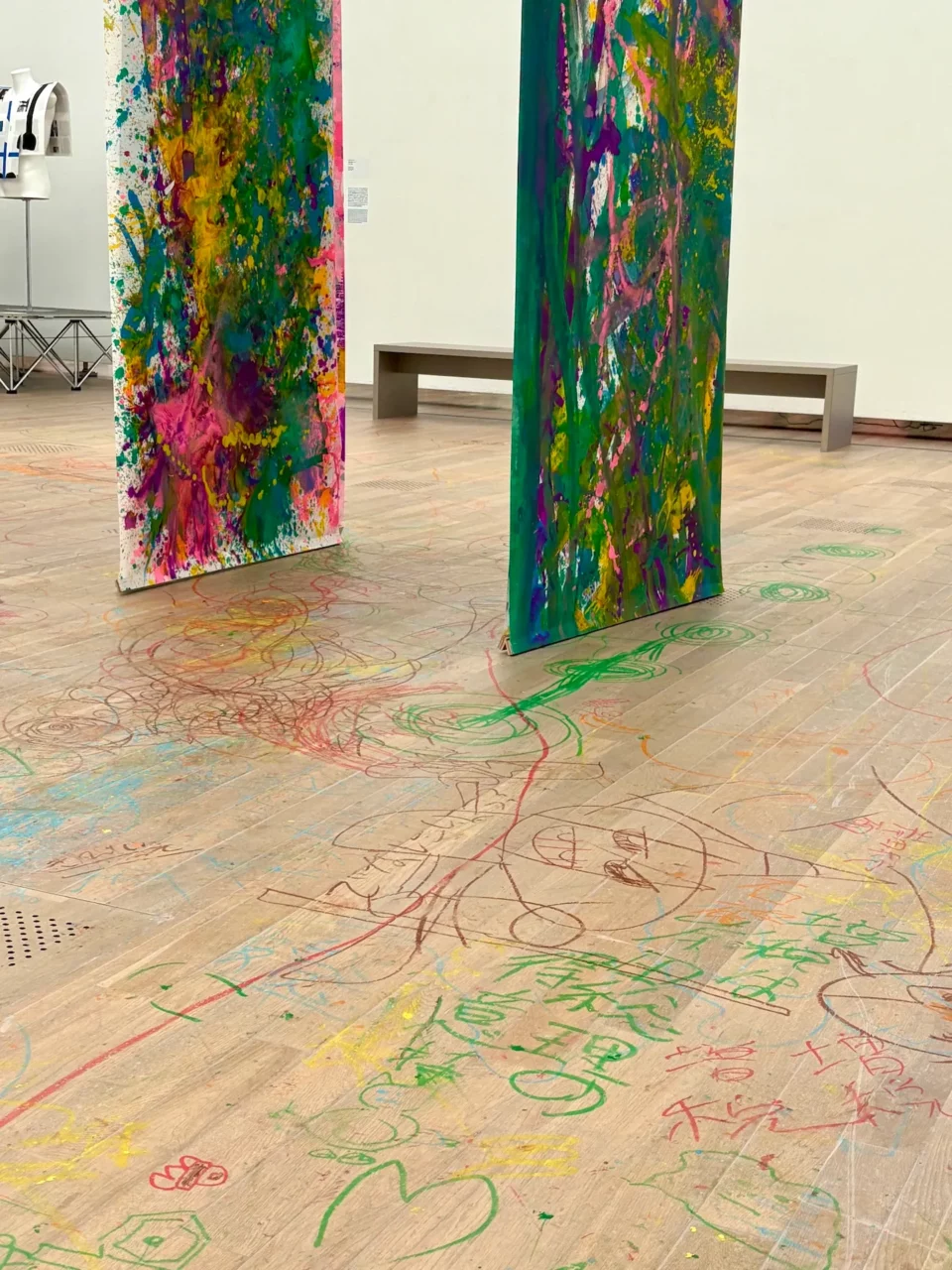
During the interview, the floor was already covered in paint, having been decorated by around 100 local elementary school students. By the exhibition’s end, the floor will likely be entirely filled with more graffiti. Interestingly, when people are invited to “feel free to draw,” they often create images of either “things they love” or “feelings of anger.” This unexpected reaction forces a moment of reflection on the deeper motivations behind artistic expression.
The act of drawing an imperfect image on the floor of a museum, typically reserved for beautiful art, leads you to reconsider the very notions of beauty and value. For instance, if Picasso were to show up and quickly sketch a pigeon here, would it be protected? With such thoughts in mind, I stepped over the artwork on the floor and moved to the next gallery.
INDEX
Juggling Art and Parenthood
The exhibition features works by Ei Arakawa-Nash himself, along with over 60 artists who collaborated with him. The nine loosely divided sections are each titled “Painting and ◯◯,” but the one that immediately stands out is Section 2, titled “Painting and Parenting.”
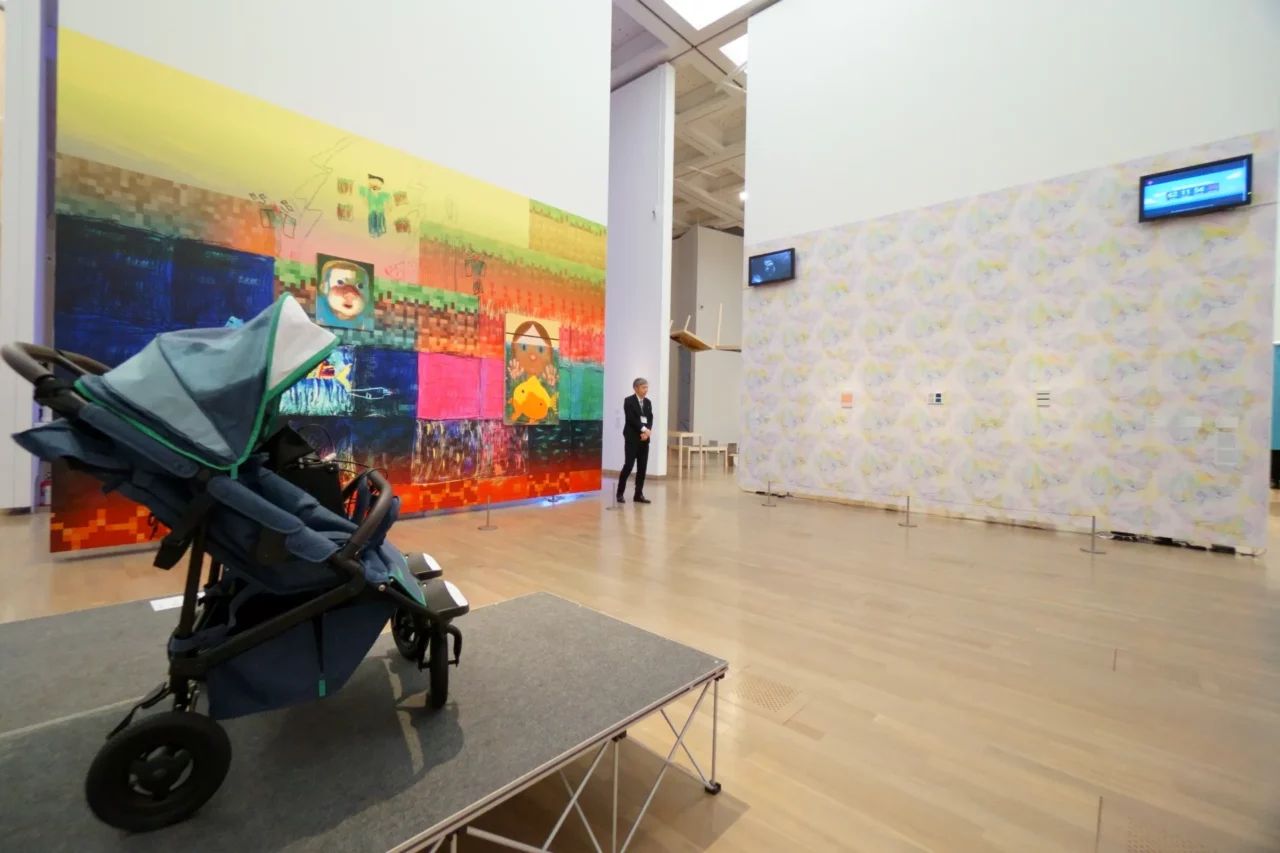
“Painting and parenting” might seem incompatible, but in fact, it’s not. Parenting, like painting, is filled with “love” and “anger.” This section showcases works by artist-parents, with one piece standing out in particular.

The portrayal of a father sleep-deprived from his baby’s nightly cries. The overwhelming frustration, almost tinged with resentment, is captured so powerfully that it evokes both a sense of discomfort and laughter. If sleep deprivation reaches this level, I’d rather the artist sleep than paint… but that’s the reality of parenting. I had expected the “Painting and Parenting” section to feature softer, more comforting works, like those in children’s books, so this intense, personal piece really struck me. Perhaps, when raising children, we should be painting more.
INDEX
Artists and Craftspeople: A Collaborative Effort
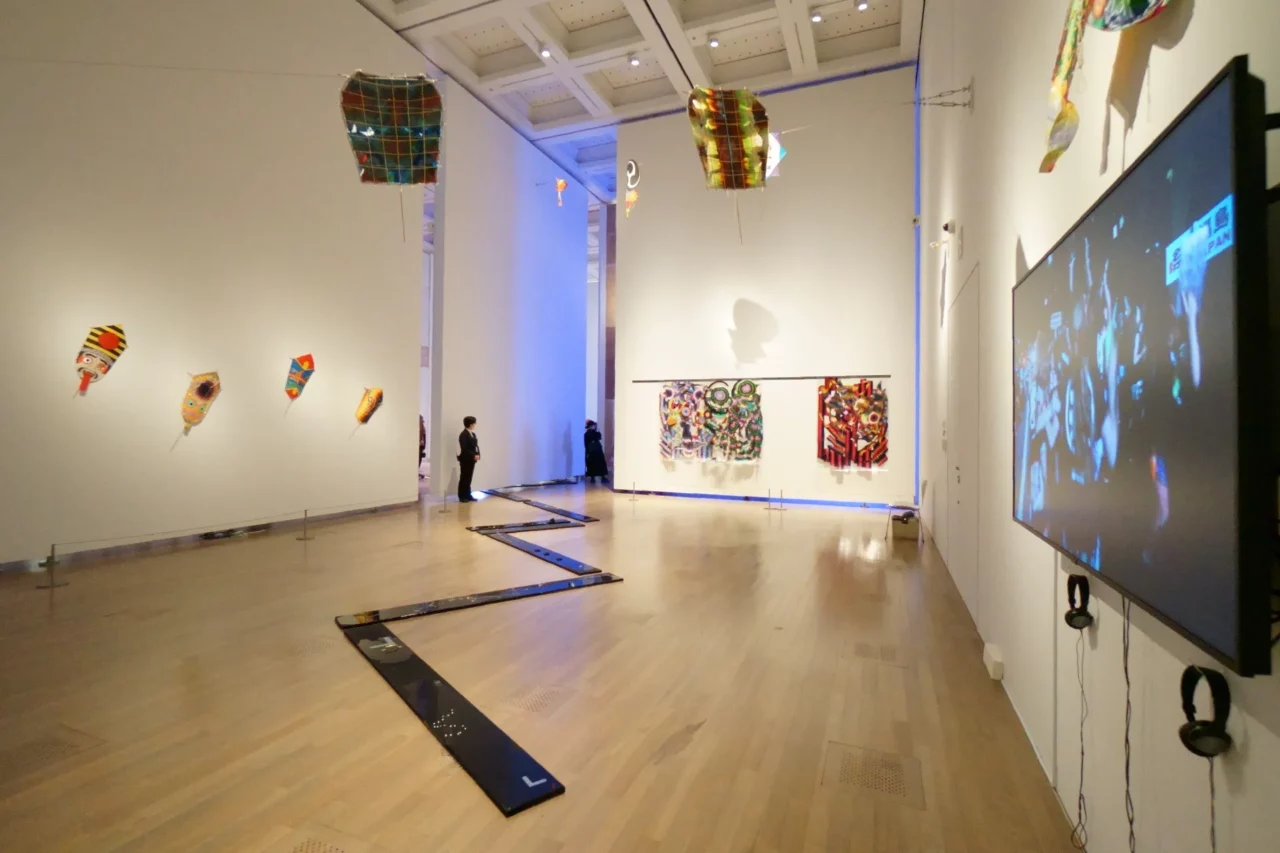
The fourth section, “Painting and Iwaki,” located in the middle of the venue, is also unique. Here, you can see traditional Enshu Yokosuka kites, originating from the Sengoku period, painted by the German artist Kerstin Brecht in collaboration with craftsmen. The vibrant kites are displayed alongside videos of them flying in the sky.
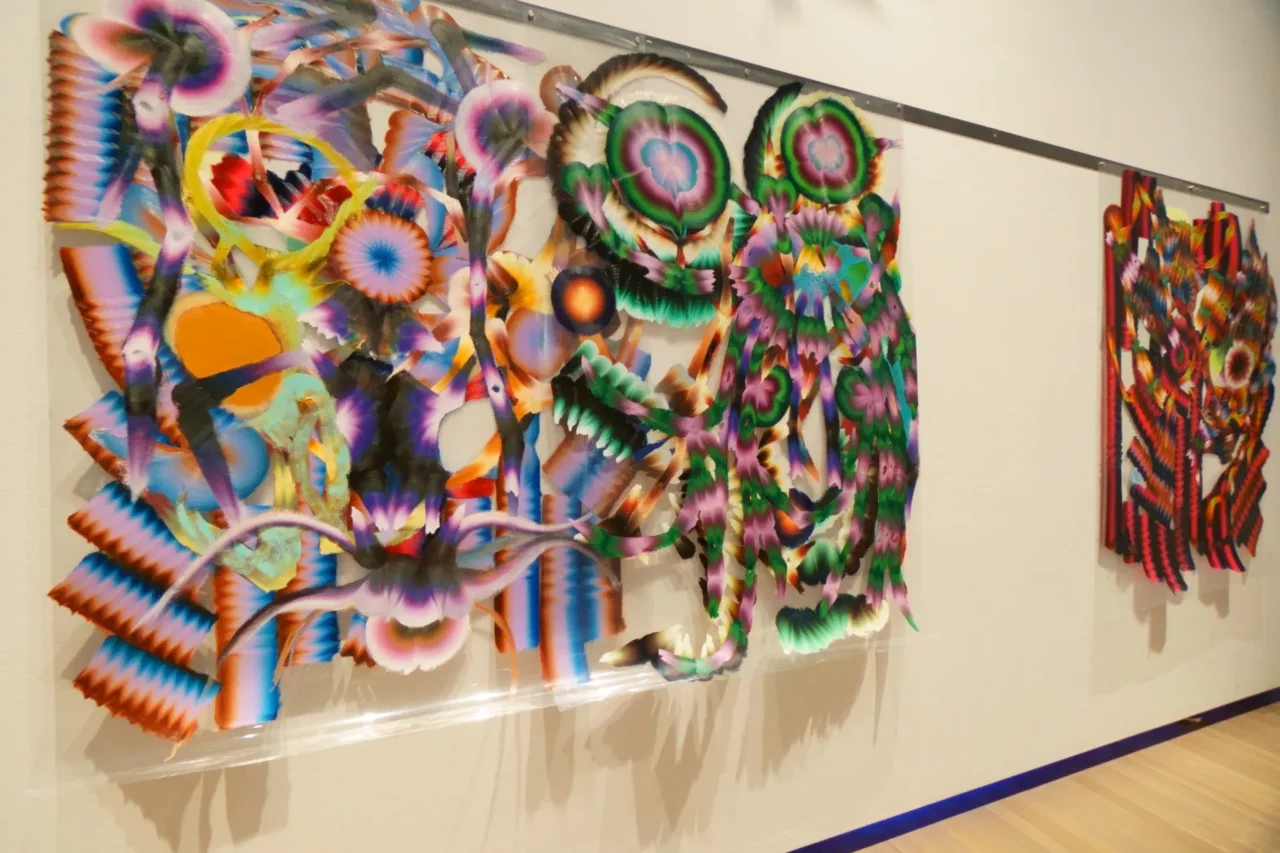
Kerstin Brecht’s vivid colors and creature-like, mysterious forms are reminiscent of the works of Keiji Tanami, who is currently holding a large solo exhibition on the first floor. In the exhibition tour, Ei Arakawa-Nash mentioned that there is an aspect of artist curation in this show. This likely refers to Arakawa-Nash himself gathering, supervising, and introducing the artists to the visitors. Brecht is one of the artists I’m glad to have discovered through this exhibition.
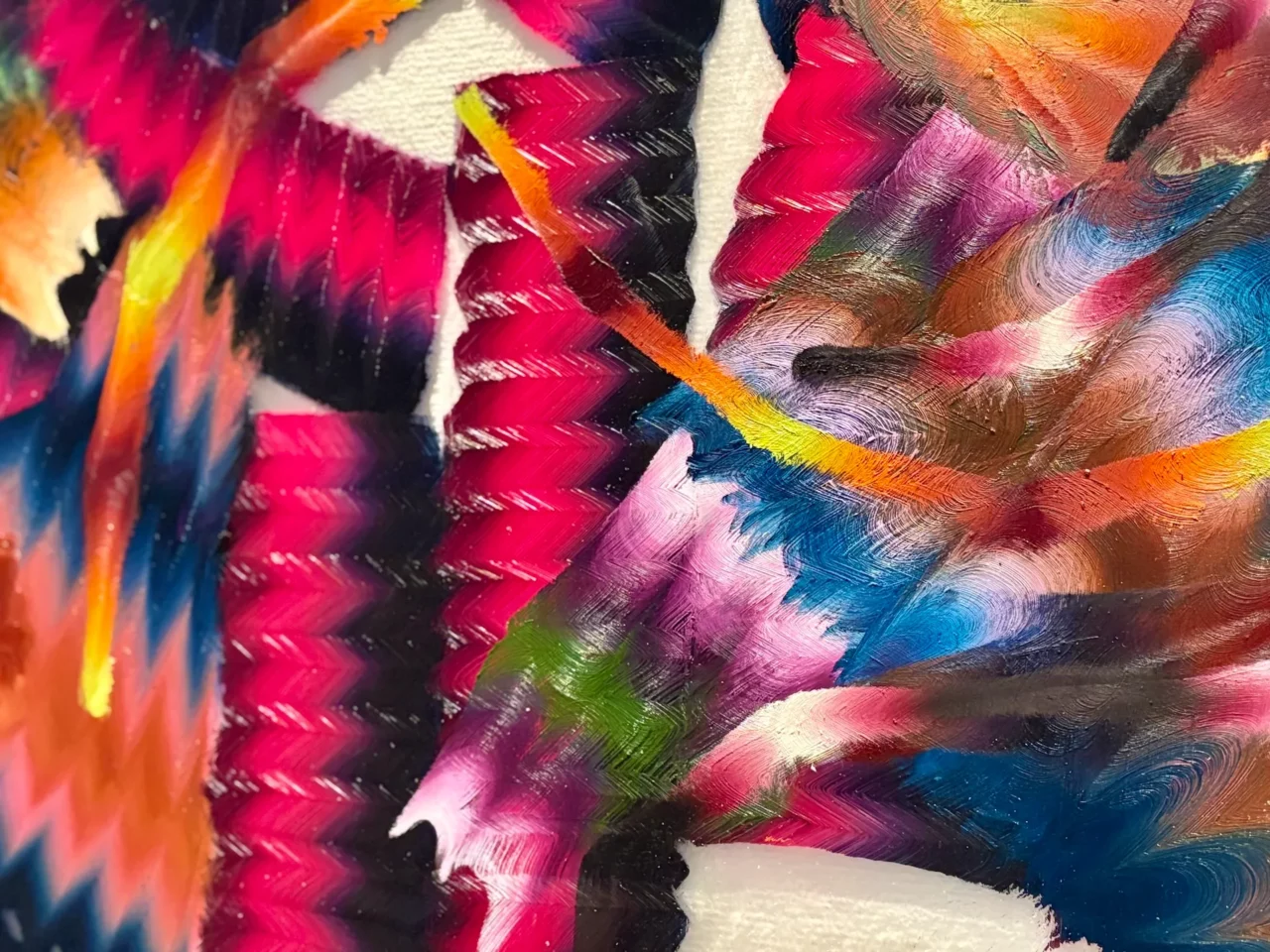
In this piece, oil paint is applied to polyester film. When viewed up close, the regular brushstrokes create a sense of three-dimensionality, making the surface appear to glow in a soft, ethereal way, which is quite fascinating.
INDEX
A Deeply Immersive Experience of Painting and Music
Perhaps the highlight of the exhibition is Section 5, “Painting and Music.” I was deeply moved by the way musicians earnestly engage with painting and create new music inspired by its influence.

The new song “Kotori Yōbi” by Yumi Matsutoya, debuting at this exhibition, is a melancholic track about a little bird that once visited the window but has now flown away, leaving no trace—just as the bird doesn’t remember her. As you walk through the gallery, the trees in the exhibition rooms subtly stretch their shadows in irregular rhythms, evoking a sense of time passing like a time-lapse video. Standing still and immersing yourself in the music, you are enveloped by a strange feeling as if the world is moving ahead without you.

Where is the bird in Kotori Yōbi? In this installation, it is likely the viewer themselves. From behind a window-like frame, Henri Matisse’s Face gazes at the people who visit and then leave the gallery. Compared to that face, which will endure through time as art, our individual lifetimes are fleeting, and our encounter with it is but a brief moment. The Matsutoya family has long had Matisse’s drawings displayed in their home, and it was through this that Masataka Matsutoya came to believe that “humans and paintings perceive time differently,” leading to the creation of this installation. Indeed, it makes sense.
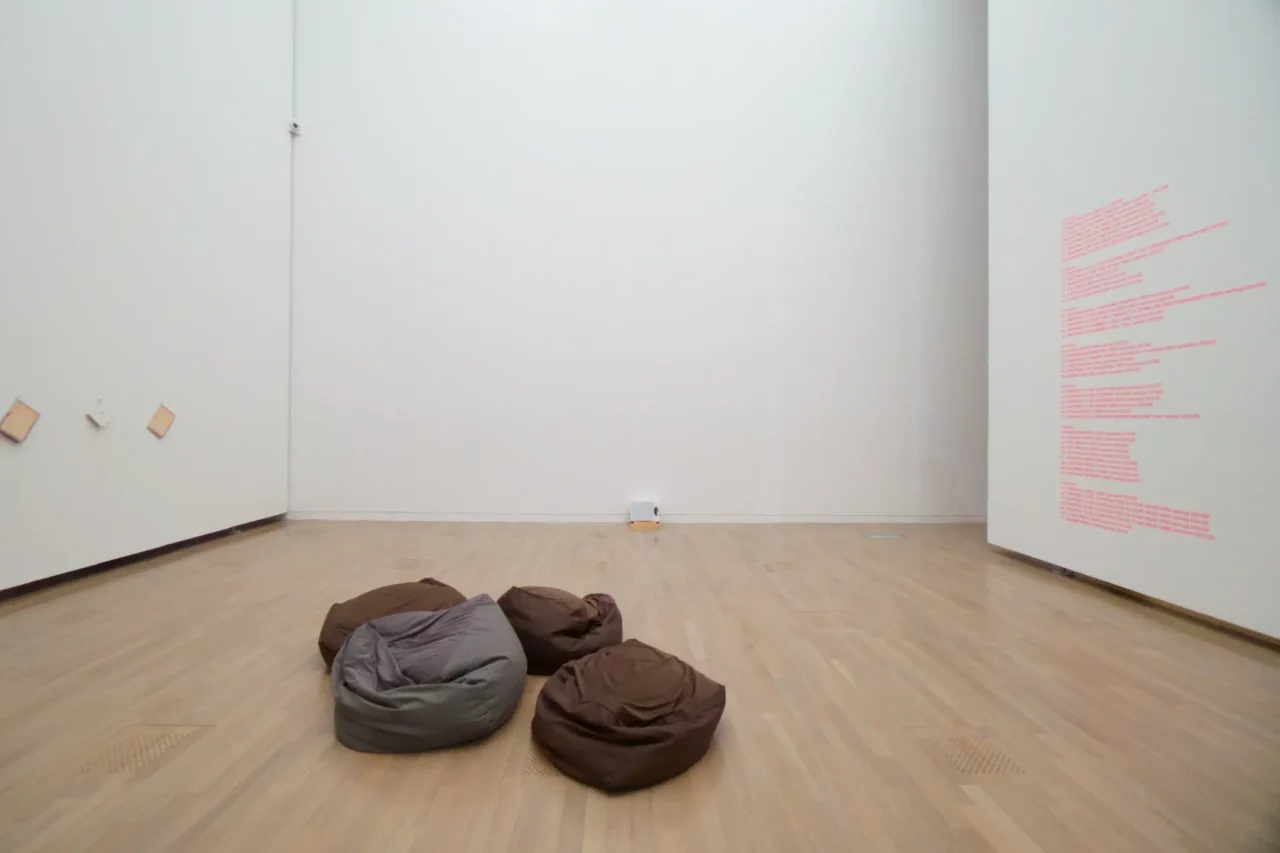
Kim Gordon, a member of the band Sonic Youth and a star of alternative rock, presents the work Sound Event for Yoko Ono’s “Instruction Painting”. In the exhibition, short but intense melodies, composed based on Yoko Ono’s text, play at intervals. With 47 pieces, each lasting between 10 seconds to a minute, you would need to settle into a beanbag and patiently wait to hear them all. Upon reflection, sitting so close to the floor of the museum is a rare experience in itself.
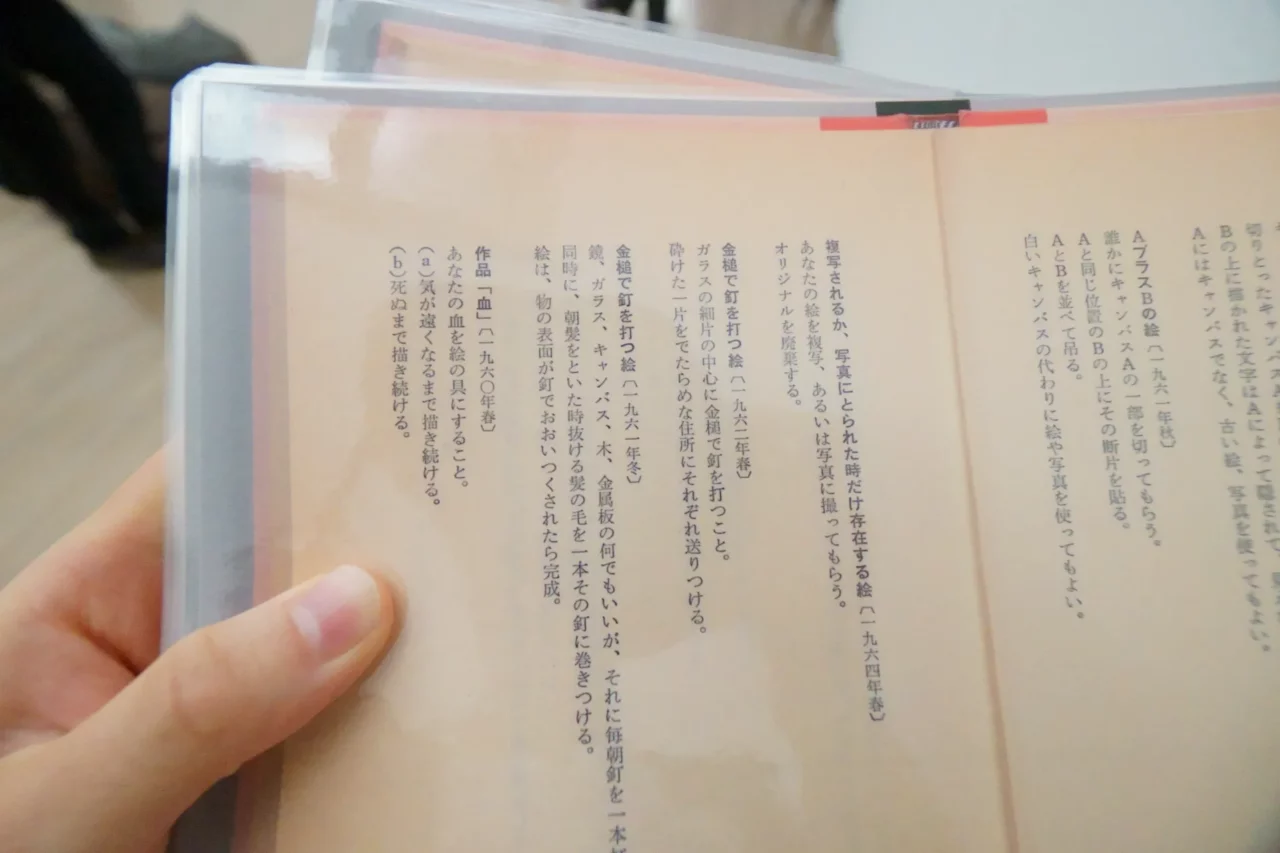
On the wall, Yoko Ono’s text is provided in both Japanese and English, allowing you to draw it closer and match it with the music. Kim Gordon murmurs the title of each song at the beginning, so you can try to catch it by ear. Alternatively, it can be interesting to listen closely to the music and try to deduce the original text based on the imagery the song evokes.
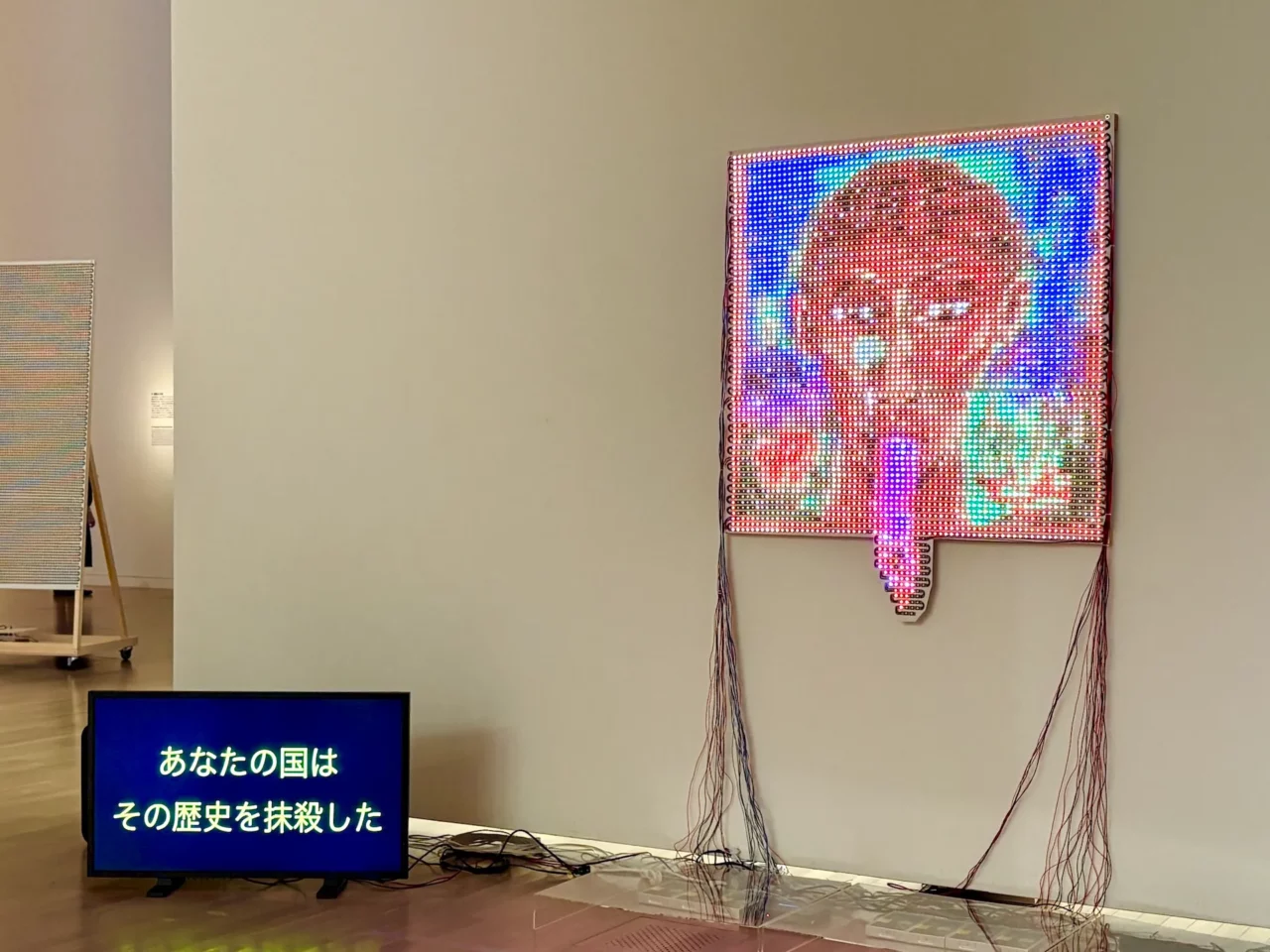
I must mention Hello Hello Hello Hello, which stood out in this section with a particularly sharp brilliance. Alongside Ei Arakawa-Nash’s recreation of David Medalla’s self-portrait using LED lights, Miho Hatori’s bright yet sinister pop music plays. The title “Halo-halo,” which means “mixed up” in Tagalog, refers to a popular Filipino dessert that is mixed together before eating. While you might expect the sweet lyrics “Mix it well / Mix it well,” the song turns into a chillingly sharp track that exposes the Japanese military’s occupation of Manila and the cover-up of wartime atrocities. It’s a work where cuteness and unease are “mixed” together. The piece evokes a strange freshness, with a sense of resilience, asking: “What’s wrong with mixing all of the past, present, and future together and enjoying it?”
INDEX
A Sneak Peek from Sections 6 to 9
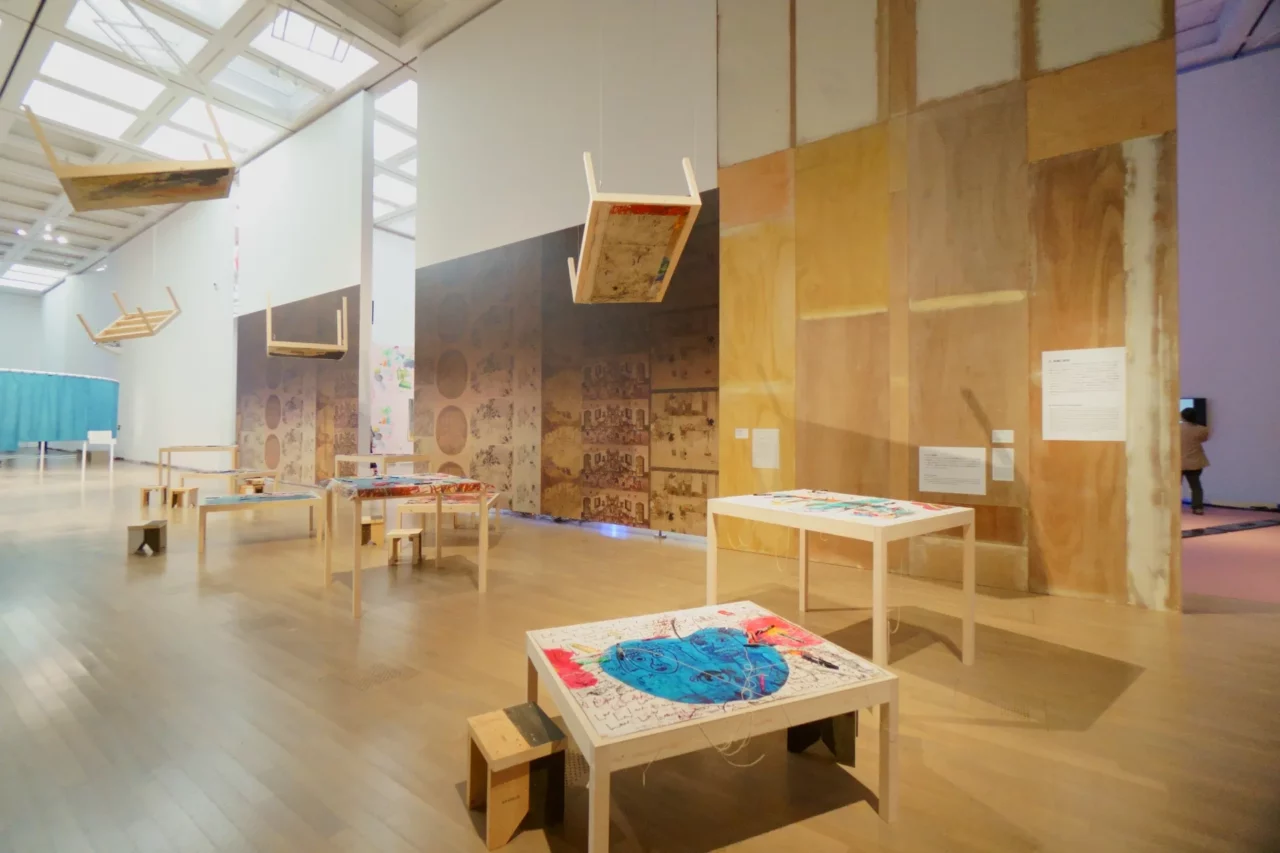
In the “Painting and Education” section, there is once again a corner where visitors are encouraged to freely draw. This is Telegram to the People of Tokyo by Colombian artist Oscar Murillo. On wooden desks are canvases that children from Colombia freely drew on, which Murillo then added to. At this exhibition, visitors are invited to add their own drawings or messages, participating in a project where they “send it back like a letter.”
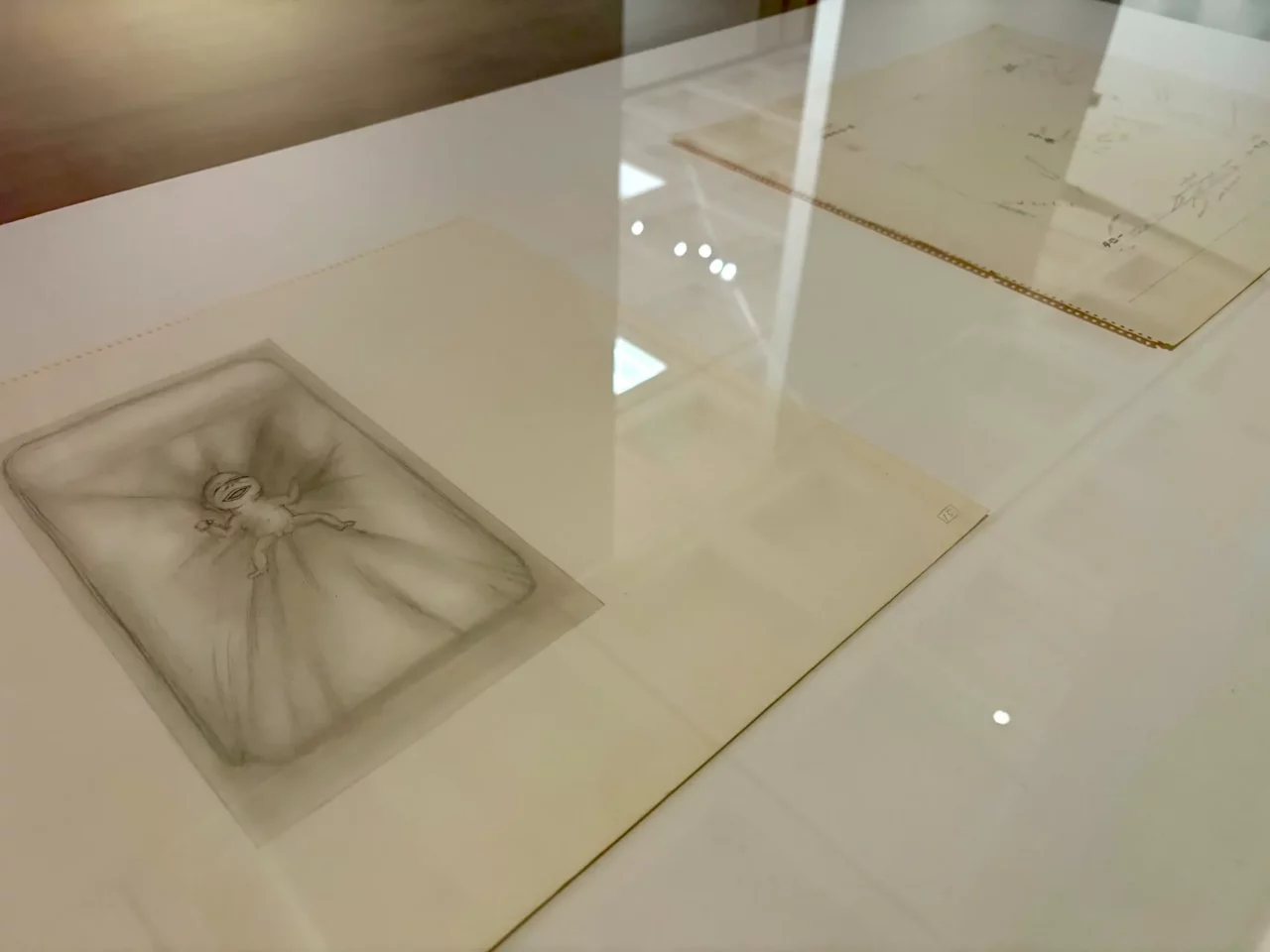
The “Painting and Passport” section, which focuses on Japanese immigrant artists, features many captivating works, including those by Yuki Katsura and Luis Nishizawa. Pictured is a drawing by On Kawara, depicting a newborn. Kawara, an artist based in New York, is known as a leading figure in conceptual art. Many visitors to art museums may have encountered his Date Paintings series, where only the date of creation is painted on small canvases. In this drawing, making its debut in Japan, a newborn is depicted with a wide, somewhat grotesque grin (or perhaps crying?), a mix of cuteness and a hint of the uncanny.
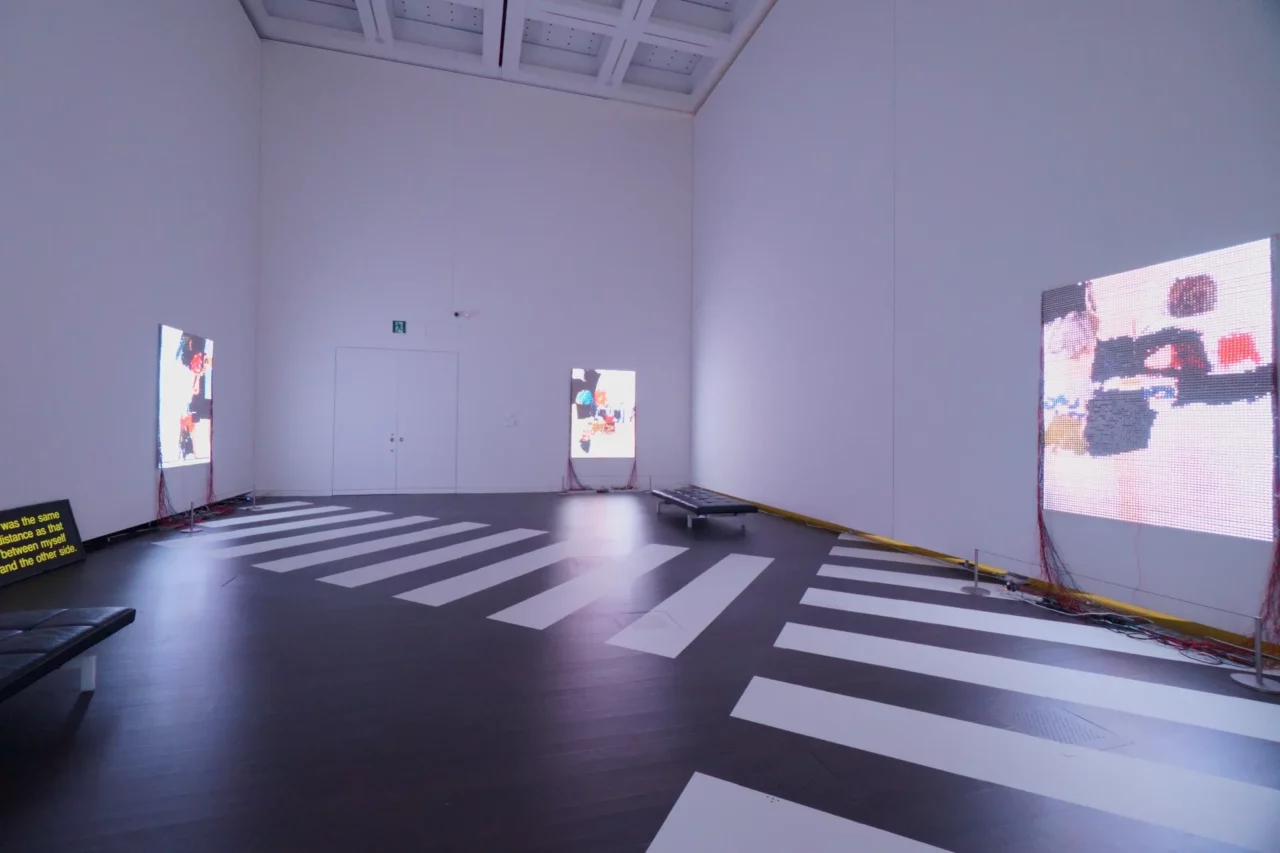
In Section 9, “Painting and Ballet,” there is a surreal space where a play, written as a prose poem by philosopher Masaya Chiba, is performed by voice actor Ayumu Murase, who plays four roles. The sound fills the room, creating a unique atmosphere. Unfortunately, due to the busy setting, I wasn’t able to catch all the words, but the sensation of hearing a painting suddenly speak was fascinating.
Finally, I want to mention a highly emotional and thought-provoking piece that might be easy to miss: Bruce Conner’s 1967 film White Rose. This documentary film captures the process of moving a massive painting, weighing one ton and measuring 3.2 meters in height, from the artist’s studio to the museum. The strong men attempting to transport the artwork evoke a strangely amusing scene, like something from The Enormous Turnip, while the separation between the artist and his work feels like a poignant love story. It’s a must-see.
INDEX
Is the Museum Really the “Graveyard of Art”?
Throughout the exhibition, numerous performances were held in the galleries, and exhibition tours led by Arakawa Nashii himself took place almost every day. The exhibition could be seen as a container for these events, but performance art, by nature, cannot be fully captured in an exhibition. So, when no performances are taking place, what exactly is this exhibition? As I pondered this, a sudden thought crossed my mind: perhaps this is not a “performance art exhibition,” but rather “performance art in which Arakawa Nashii holds an exhibition at the National Art Center.”

If that’s the case, I believe the aim of this performance art is to throw a stone into the quiet relationship between us and the museum. Typically, when it comes to exhibitions at large national museums, there’s an unspoken expectation of a certain level of formality. The sense of grandeur might feel intimidating to some. Yet, this exhibition immediately disrupts that norm—starting with the invitation to “freely draw on the floor,” and even allowing visitors to sit on bean bags on the floor. The National Art Center, Tokyo has embraced this, and the exhibition is free and open to everyone. At the preview, I was surprised to see so many young children—honestly, it was the first time I’d witnessed such a scene in a museum, and it left a lasting impression.
Ei Arakawa-Nash’s “Paintings Are Pop Stars” is not your typical art show; it’s more like half exhibition, half festival, and it’s best experienced by just wandering in. You’ll surely find a piece that speaks to you, and it might change every time you visit. This exhibition is likely a significant challenge for the National Art Center, Tokyo—an opportunity to witness the museum being involved in something “strange,” a rare moment. It’s probably best to be part of it now while you can.
Ei Arakawa-Nash: Paintings Are Popstars

Exhibition Dates: October 30, 2024 (Wednesday) – December 16, 2024 (Monday)
Closed: Every Tuesday
Opening Hours: 10:00 AM – 6:00 PM
*Open until 8:00 PM on Fridays and Saturdays
*Last admission 30 minutes before closing
Venue: The National Art Center, Tokyo, Special Exhibition Room 2E
7-22-2 Roppongi, Minato-ku, Tokyo 106-8558
Organized by: The National Art Center, Tokyo
In cooperation with: Taka Ishii Gallery, Nakagawa Chemical Co., Ltd.
Admission: Free
Contact: 050-5541-8600 (Hello Dial)
Official Website: https://www.nact.jp/exhibition_special/2024/eiarakawanash/













